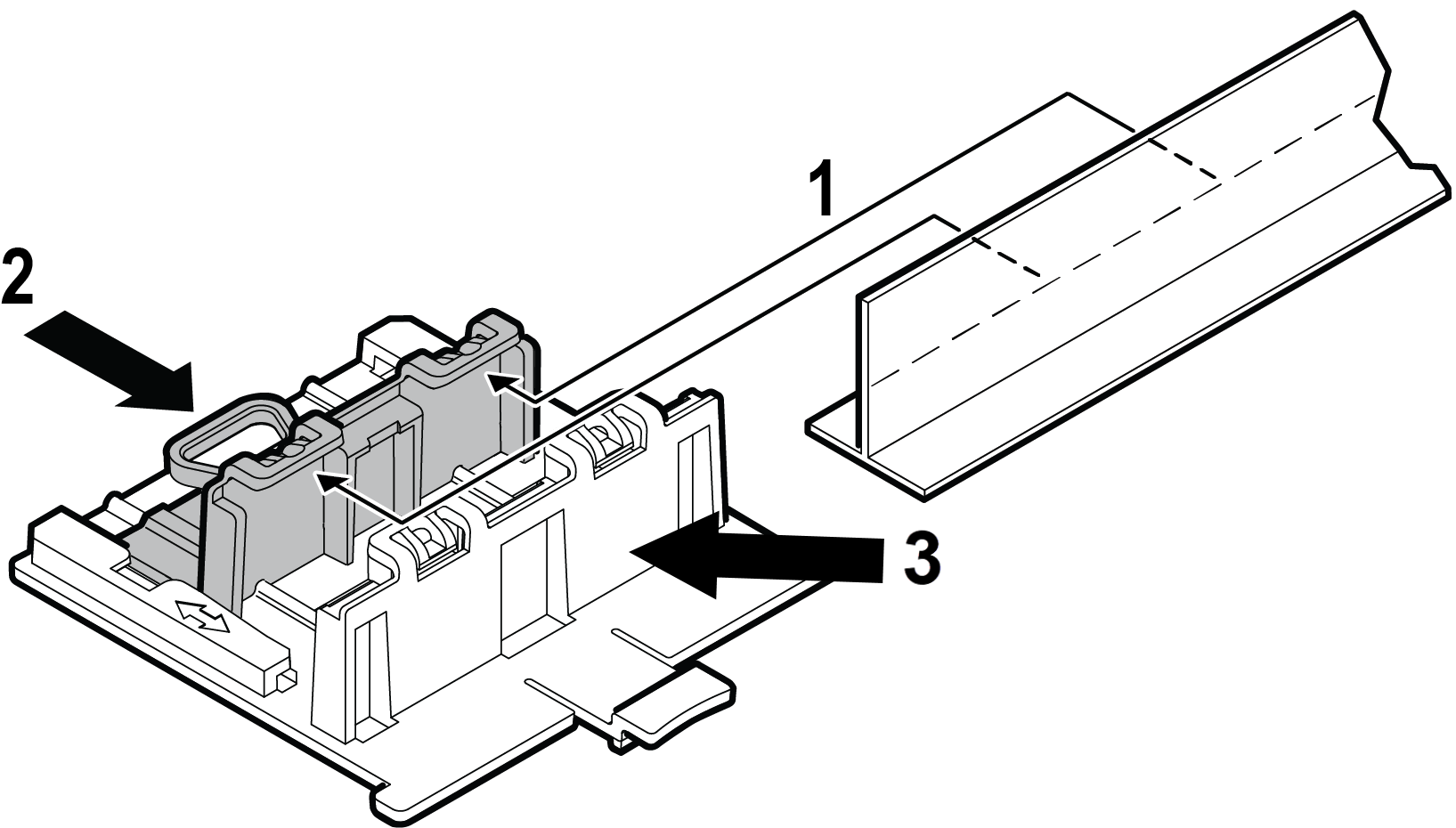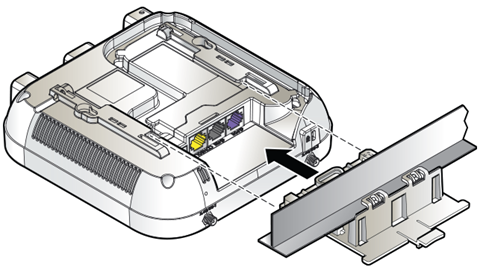Before you begin
Ensure that the T-bar meets the following conditions before installing the DCMTR01
bracket on it:
- T-bar width must be 9/16 in. (15
mm), 15/16 in. (24 mm), or 1.5 in. (38 mm).
- T-bar must be structurally
sound.
- T-bar maximum base thickness
cannot exceed 0.118 in. (3 mm).
- T-bar maximum protrusion must be
0.625 in. (15.800 mm).
- Maximum protrusion of the ceiling
tile cannot exceed 0.625 in. (15.800 mm).
About this task
The optional WS-MBI-DCMTR01 (#30518) bracket is used for T-bar installations when the
main mounting bracket is not used.
Procedure
-
Remove the ceiling panels around
the T-bar.
-
Open the movable sliding part of the DCMTR01 bracket to give the stationary end
of the bracket and the slider T-bar more space.
DCMTR01 bracket parts and T-bar
| Callout |
Description |
| 1 |
T-bar |
| 2 |
Movable sliding part of the DCMTR01 bracket |
| 3 |
Stationary part of the DCMTR01 bracket |
-
Hook the stationary end of the
bracket onto the T-bar.
-
Tilt the T-bar up slightly in
such a way that you are holding the stationary and movable parts of the
bracket.
-
Squeeze the bracket parts together until you hear the T-bar locking tab click
into place.
-
Slide the bracket base into the
rear groove of the access point.
Attach the access point to the DCMTR01 bracket
-
Hold and rock the access point back and forth to ensure that it is securely
mounted.
-
Attach the RJ45 connector to the GE1 port.
-
Replace the ceiling tile.



